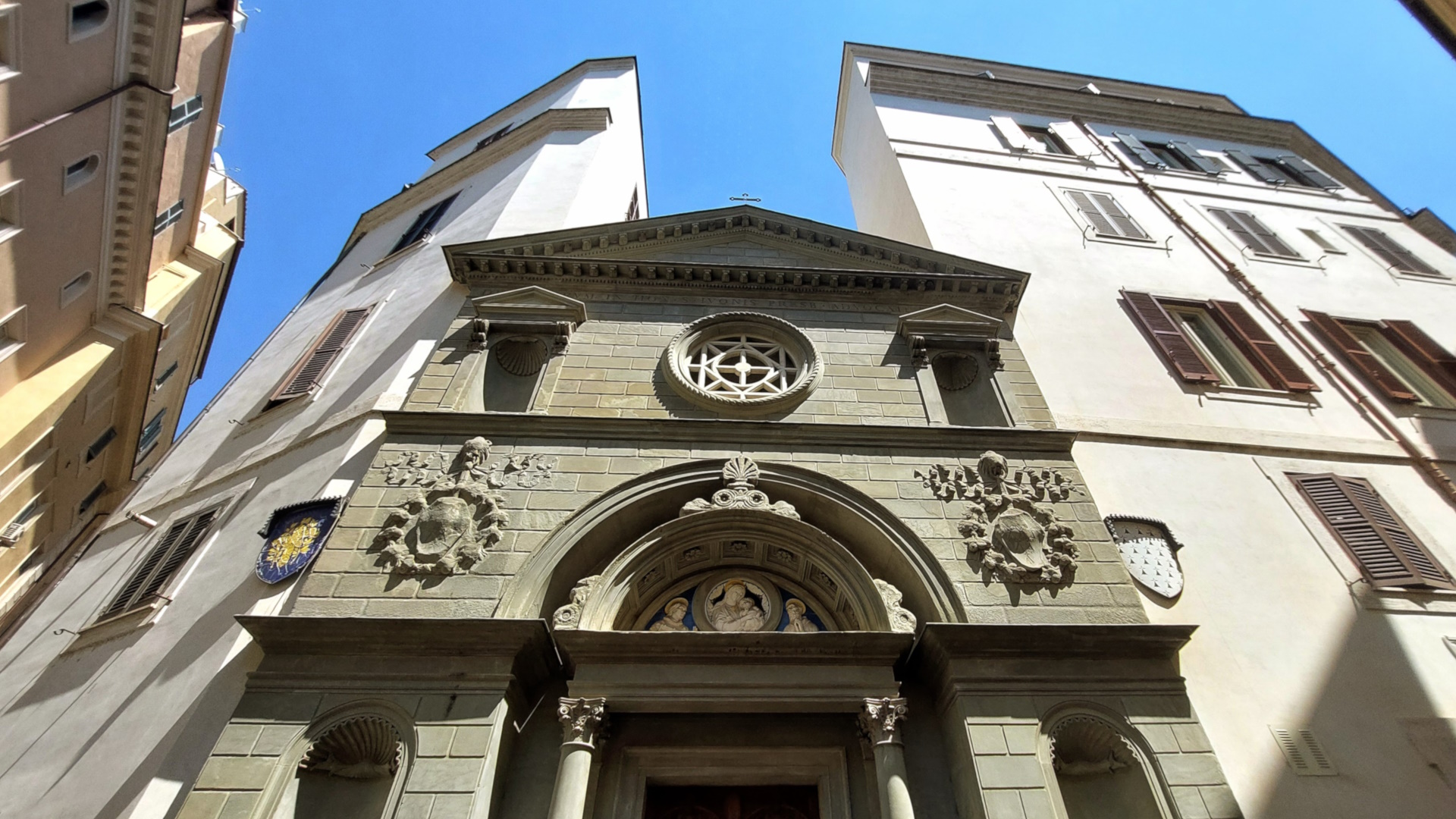
From Brittany to Rome
As a pilgrimage destination since antiquity, Rome has always been a multicultural city, with a very strong presence of foreigners from all over the world who had their own temples, hospitals and different welfare services. The French community was certainly no exception and a proof thereof is the large number of French-speaking Catholic churches scattered around the city: San Luigi dei Francesi, the church of Trinità dei Monti, San Nicola dei Lorenesi, Santi Claudio e Andrea dei Borgognoni and, of course, Saint Yves des Bretons. Called in Italian Sant’Ivo dei Bretoni, the church was dedicated to Yves Hélory, a French parish priest canonized in 1347 by Pope Clement VI and patron saint of Brittany as well as of lawyers.
From the confraternity of marble workers to the faithful at St. Ivo
Now surrounded by modern buildings that leave only its façade in view, the church was founded in 1455, that is, almost a century before the Duchy of Brittany became part of the rule of the kings of France, thanks to the good offices of Cardinal Alain de Coëtivy, who belonged to a noble Breton family. For his fellow expatriates at Rome, the cardinal had in fact obtained from Pope Nicholas V an ancient ruinous church, the medieval Sant’Andrea de Mortarariis (o de Marmorariis), so called because of its connection with the Roman confraternity of marble workers. In addition to changing the church’s dedication, the Breton community radically restored the building and added, as was customary, a hospice and hospital for pilgrims arriving in the city. In 1582 the confraternity of St. Ivo who ran the institution was merged with that of St. Louis of the French, but the church maintained the Breton link despite being formally regarded as one of the national churches of France.
The church of Sant’Ivo in the 19th century
In its present guise, however, the small church dates back to the late 19th century: left in a state of neglect from 1826, when Pope Leo XII suppressed the parish attached to the church, and periodically flooded by the Tiber, the original structure was demolished in 1875 and then rebuilt on a smaller scale and in a slightly different location. The project was entrusted to Luca Carimini, who was inspired by Renaissance architecture: for the façade, he used “pietra serena”, a gray sandstone used in many Florentine monuments, a rather gloomy material prone to rapid deterioration, so much so that it has necessitated numerous restorations over the years. Helping to add a touch of color to the façade, however, is the external majolica relief by Luca della Robbia, belonging to the demolished church and completed in style with the figures of St. Ivo and St. Bernard. The interior of the church, fully restored in 2012-2013 with the support of the Conseil Régional de Bretagne and the Fondation du Patrimoine, is richly decorated in neo-Renaissance style, with floor and inlays on the walls in imitation Cosmatesque style.
The Feast of St. Ivo in Rome
Inside the church, a little wooden statue of St Yves, in a mediaeval style, shows the saint holding a bag of money: a priest and lawyer born in 1252 to a wealthy family, Yves Hélory de Kermartin was in fact famous for his charitable donations and his great concern for the weak poor, whom he often defended in the courts. His fame as a saint quickly spread far beyond the borders of Brittany: in Rome, for example, the wonderful church of Sant’Ivo alla Sapienza, a Baroque masterpiece by Borromini, is also entitled to the saint. Every year on 19 May, the day of his death, an imposing commemoration is held in the cathedral of his hometown in Brittany. The saint’s feast, however, is also celebrated with great pomp also in the small church of Sant’Ivo dei Bretoni. A solemn mass is usually attended by the French ambassador to the Holy See, the administrator of the Pieux Etablissements de la France à Rome et à Lorette, the rectors of French churches, and a number of clergy and laity present in Rome.
Photo turismoroma
Information
For the timetable of the masses and visiting conditions, please consult the contacts.
 Condividi
Condividi
Location
To find out about all accessibility services, visit the Rome accessible section.











































